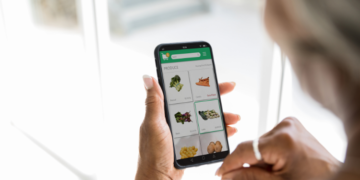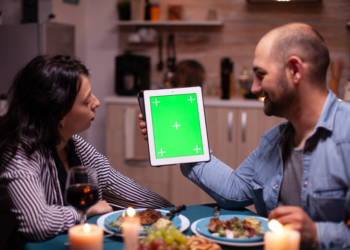The absence of outdoor space is no longer an excuse not to have your home garden. Provided you have some spare room indoors; you can cultivate your favorite plants. This is ideal for everyone who wants to start a fun weekend project or start gardening properly.
As long as you have space inside that receives natural light, it is possible to successfully cultivate vegetables, herbs and enjoy a fresh harvest all year round.
Photo by Teona Swift from Pexels
Indoor gardening needs some special tips and tricks for success. You need to be clever with temperature, lighting, and other essential factors necessary to the plant’s survival. This article will explore five tips to put you on the path to success as you attempt indoor gardening.
- Less Watering
Daily watering is not essential for your indoor garden, as many beginners wrongly assume that constant watering is necessary for the plant’s survival. However, the best way to go is less frequent watering. Indoor plants do not need excess water as they do not get optimum sunlight that will suck the excess moisture.
Before watering, examine the soil to see if it is dry by dipping your finger into it. By doing this, you check for moisture and water if it seems dry.
Plants are different and have unique needs. Some plants thrive with excess and constant watering, while others can do with a bit of drought. You can have a weekly watering chart that will guide you every week to ensure that you are on track with their water requirement.
Your goal is to have enough water to keep the soil moist and not soggy. As you pour water into the plant, do it slowly until some drip out of the pot. Some plants can survive by watering only once or twice a week. Consider having a fan near your plant, like ac infinity, to ensure optimum circulation of air, which will help evaporate excess water and prevent the buildup of dust on leaves.
Photo by Julia Kuzenkov from Pexels
- Consider Plants that Thrive Indoor.
For beginners, make sure to consider plants that require low maintenance, low light, and optimum survival in containers. Plants that produce flowers are a good choice as they can help filter your indoor air. This makes them beneficial for your mental and physical health.
Here are some indoor plants beginners can lay their hands on:
- Lettuce: these are tasty and do not require much effort. Ensure to enrich the soil with compost and start the seed with heat mass.
- Snake Plant: Such plants can thrive in low light conditions. It does not require strict maintenance and can develop up to 10 feet indoors.
- Spider Plant: these are recommended for hanging baskets and beginners with no experience with indoor gardening. Spider plants, however, need constant repotting.
- Philodendrons: These are a terrific choice for the new indoor gardener. Maintenance is easy and can survive well indoors or outdoors.
- Arugula: is a fast germinating plant making it ideal for indoor cultivation. A single plant can give multiple harvests, provided you cut only the bigger leaves.
- Aloe Vera: This is a spiky plant that thrives with little watering. The plant has a colorless gel that has impressive healing power.
- Get it Right With the Temperature.
Plants, especially the ones cultivated indoors, need the perfect temperature range for optimum growth and survival. Make sure you know the proper temperature range for your plant, as it will guide where to place them.
Some plants can thrive with temperatures of 65 degrees. Such plants should not be mixed with the ones that need as much as 80 degrees. Always be observant of the leaves of your indoor plant. Leaf turning yellow is a sign of excessive cold temperature. Get such a plant to a warmer section of your house.
Also, avoid placing your plant near any draft. Ideally, they should not be beside poorly insulated windows, air conditioning units, outside doors, etc., as it might form an air pattern that could freeze plants and cause their death. If you are away for some days, make sure to set the perfect temperature for your house before leaving. The excessive cold could cause the death of the plant.
Photo by Teona Swift from Pexels
- Be Smart with Lightning
Photosynthesis is the process by which plants use light and Carbon dioxide to make nutrients. Sunlight is a critical equation essential for all plants to have photosynthesis. However, plants differ, as they need different light amounts. Many indoor plants will survive exceptionally with indirect lights.
Indoor plants will survive optimally with indirect lights, positioned near west-facing windows or some feet away from south-facing windows for plants that do not need much direct sunlight. Many indoor plants like snake plants, ZZ plants, pothos, etc., do not need much light to survive.
Some plants will do well with artificial lights indoors. This is essential in winter months and regions that do not get enough hours of light in the day. It is not enough to rely on regular household light bulbs to provide your household plant with light. Consider LED grow light or fluorescent lights with full-spectrum bulbs that can supply your plant with a balance of the warm and cool light to simulate the natural habitat successfully.
- Choose the Right Pot Size
In selecting a pot for your indoor plant, you need to consider a couple of things. You need to consider the size, materials, and drainage capacity. Your pot should be proportional to the current size of your plants. Make sure not to use a bigger pot to start your plant as it robs the root of the capacity to suck in water fast before the water drains out.
When the plant outgrows the pot, transplant it into a giant plant. People who prefer to have hanging plants can consider plastic pots due to their lightweight nature. Your pot needs to hold water well, with a drainage hole below to allow excess water escape.
Conclusion
You get many benefits from having an indoor plant. Besides getting access to fresh vegetables, you get to keep your plant away from prying eyes and pests. Also, such plants can beautify your indoor space, and purify the indoor air, ensuring superb air quality.
Discussed here are proven tips that can help you successfully cultivate a garden indoors.
























































